CAPE CANAVERAL, FL – India’s first ever Mars probe ‘MOM’ successfully fired its main engine today (Dec. 1), blasting the craft free of the Earth’s sphere of influence forever to begin her nearly yearlong momentous voyage to the Red Planet.
Indian space engineers initiated the 440 Newton liquid fueled engine firing precisely as planned at 00:49 hrs (IST) on Sunday, Dec. 1, 2013 during a critical nail-biting burn lasting some 22 minutes.
The Trans Mars Insertion (TMI) firing propelled India’s Mars Orbiter Mission (MOM) away from Earth forever and placed the spacecraft on course for a rendezvous with the Red Planet on September 24, 2014 – where it will study the atmosphere and sniff for signals of methane.
Sunday’s Mars insertion burn imparted the vehicle with an incremental velocity of 647.96 meters per second (m/sec) consuming 198 kg of fuel.
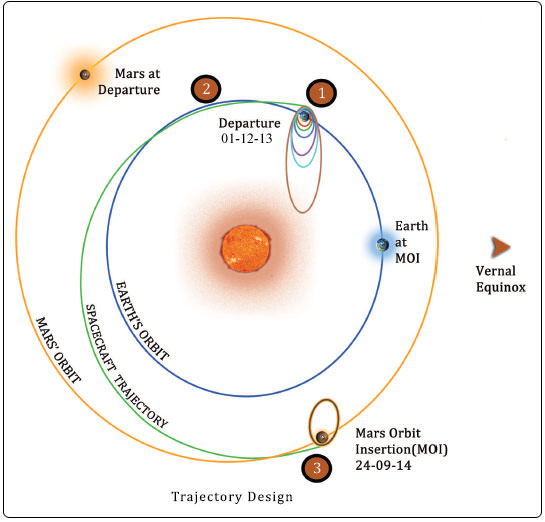
The maneuver dubbed ‘The mother of all slingshots’, enabled MOM to finally achieve escape velocity and catapulted the 1,350 kilogram (2,980 pound) spacecraft on an historic flight streaking towards Mars.
And in a rare but rather delightful coincidence, MOM is not alone on her remarkable Martian sojourn. Following the triumphant engine burn, she now joins NASA’s MAVEN orbiter in a gallant marathon race to the Red Planet.
MOM was designed and developed by the Indian Space Research Organization’s (ISRO) at a cost of $69 Million and marks India’s inaugural foray into interplanetary flight.
“The Earth orbiting phase of the spacecraft ended,” with this maneuver said ISRO.
MOM is healthy and all systems are functioning normally.
While MOM was cycling Earth, ISRO scientists and engineers activated and tested the probes systems and science payloads.
They also turned the crafts color camera homewards to capture the “First ever image of Earth Taken by Mars Color Camera,” according to ISRO.
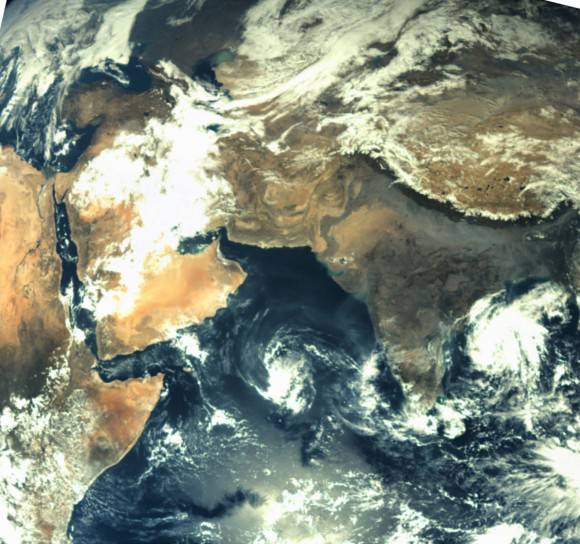
MOM is nicknamed ‘Mangalyaan’ – which in Hindi means ‘Mars craft.’
MOM’s journey bagen with a picture perfect Nov. 5 liftoff atop India’s highly reliable four stage Polar Satellite Launch Vehicle (PSLV) C25 from ISRO’s Satish Dhawan Space Centre SHAR, Sriharikota.
The PSLV booster precisely injected MOM into an initial elliptical Earth parking orbit of 247 x 23556 kilometers with an inclination of 19.2 degrees.
PSLV does not have sufficient thrust to send MOM streaking directly to the Red Planet.
Therefore since the flawless launch, the engine has been fired 6 times on November 7, 8, 9, 11, and 16 plus one supplementary maneuver to gradually raise the spacecrafts apogee from 23556 km to 192,874 km.
The most recent orbit raising maneuver occurred on Nov 16, 2013 with a burn time of 243.5 seconds and increased the apogee from 118,642 km to 192,874 km.
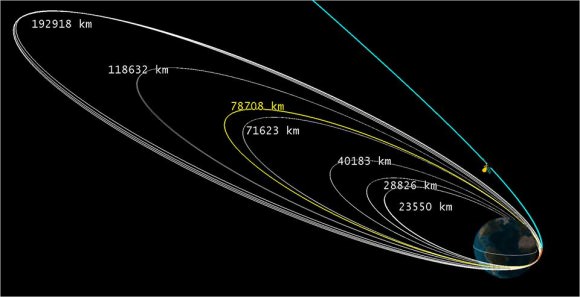
Today’s burn was the final one around Earth and absolutely crucial for setting her on course for Mars.
MOM was the first of two missions dispatched to Mars by Earthlings this November.
Half a world away, NASA’s MAVEN orbiter blasted off on Nov. 18 from Cape Canaveral Air Force Station, Florida atop an Atlas V booster on a direct path to the Red Planet.
The MOM spacecraft is now on traveling on a heliocentric elliptical trajectory to begin a 300 day long interplanetary voyage of more than 700 Million kilometers (400 Million miles) to the Red Planet.
Along the path to Mars, ISRO plans to conduct a series of Trajectory Correction Maneuvers (TCMs) using MOM’s Attitude and Orbit Control System (AOCS) thrusters to precisely navigate the probe to the point required to achieve orbit around the Red Planet
Following the ten month cruise through space the orbital insertion engine will fire for a do or die burn on September 24, 2014 placing MOM into an 377 km x 80,000 km elliptical orbit around Mars.
MOM will reach Mars vicinity just two days after MAVEN’s arrival on Sept. 22, 2014.
If all continues to goes well, India will join an elite club of only four who have launched probes that successfully investigated the Red Planet from orbit or the surface – following the Soviet Union, the United States and the European Space Agency (ESA).
Both MAVEN and MOM’s goal is to study the Martian atmosphere, unlock the mysteries of its current atmosphere and determine how, why and when the atmosphere and liquid water was lost – and how this transformed Mars climate into its cold, desiccated state of today.
Although MOM’s main objective is a demonstration of technological capabilities, the probe is equipped with five indigenous instruments to conduct meaningful science – including a multi color imager and a methane gas sniffer to study the Red Planet’s atmosphere, morphology, mineralogy and surface features. Methane on Earth originates from both geological and biological sources – and could be a potential marker for the existence of Martian microbes.
MOM’s 15 kg (33 lb) science suite comprises:
MCM: the tri color Mars Color Camera images the planet and its two tiny moons, Phobos and Deimos
LAP: the Lyman Alpha Photometer measures the abundance of hydrogen and deuterium to understand the planets water loss process
TIS: the Thermal Imaging Spectrometer will map surface composition and mineralogy
MENCA: the Mars Exospheric Neutral Composition Analyser is a quadrapole mass spectrometer to analyze atmospheric composition
MSM: the Methane Sensor for Mars measures traces of potential atmospheric methane down to the ppm level.
Scientists will be paying close attention to whether MOM detects any atmospheric methane to compare with measurements from NASA’s Curiosity rover – which found ground level methane to be essentially nonexistent – and Europe’s upcoming 2016 ExoMars Trace Gas Orbiter.
India’s MOM – ‘Mangalyaan’ mission is expected to continue gathering measurements at the Red Planet for at least six months and hopefully much longer.
MAVEN could operate for a decade or longer and is also crucial for relaying images and data collected by NASA’s current and upcoming surface rovers and landers.
Although they were developed independently and have different suites of scientific instruments, the MAVEN and MOM science teams will “work together” to unlock the secrets of Mars atmosphere and climate history, MAVEN’s top scientist told Universe Today.
“We have had some discussions with their science team, and there are some overlapping objectives,” Bruce Jakosky told me. Jakosky is MAVEN’s principal Investigator from the University of Colorado at Boulder.
“At the point where we [MAVEN and MOM] are both in orbit collecting data we do plan to collaborate and work together with the data jointly,” Jakosky said.
Stay tuned here for continuing MOM and MAVEN news and Ken’s MAVEN and SpaceX Falcon 9 launch reports from on site at the Kennedy Space Center press center and Cape Canaveral Air Force Station, Florida.

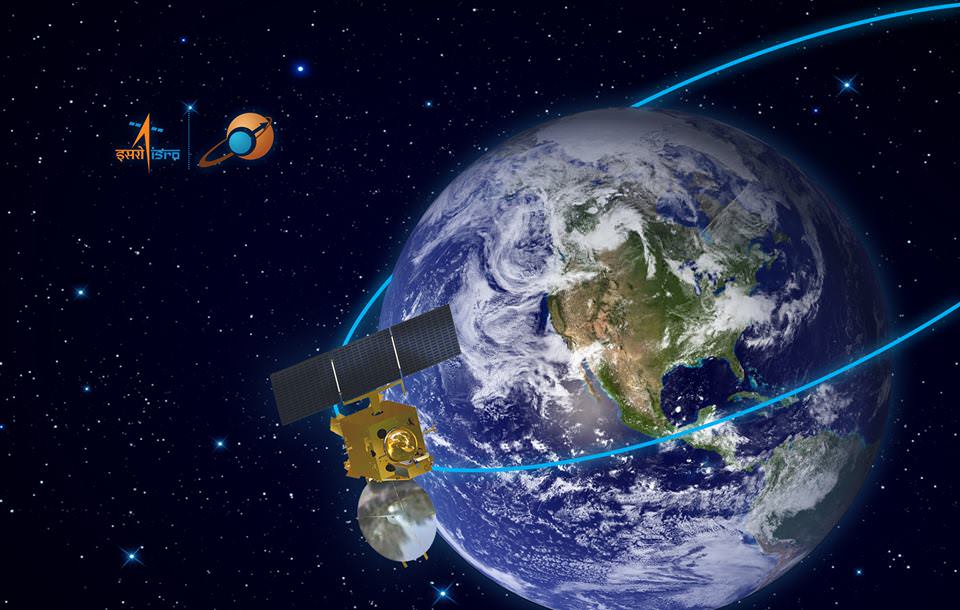
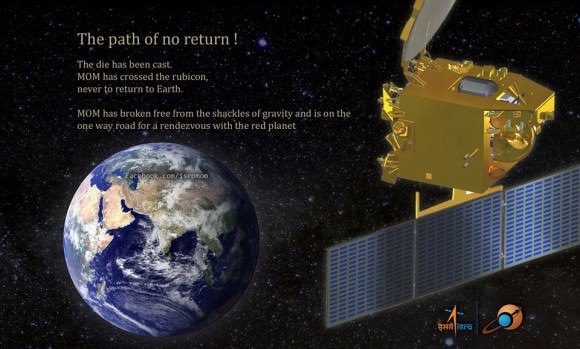
Eyes on the ground from stars in the sky! I’ll wager the Methane observed will be seasonal and localized… Hope they (NASA and ISRO) double check the Hellas Basin.. often!
Agree with you re Hellas Basin. It’s one of the most interesting places on Mars IMO, but has not got the attention it deserves so far.
Absolutely DELIGHTED that the two largest democracies on Earth .. USA and India.. are working together to expand the frontiers of knowledge.
absolutely correct and more countries should come together
No Virender not more countries. Not China, not any foul dictatorships. Only democracies that share values.
India and USA together…!!! We are Seeing an introduction to the new future
I’m absolutely delighted to know that India’s Mars craft has undergone resoundingly successful Trans Mars Injection..
The low-cost technology demonstrator would further boost the exploration of deep space and space technology
I’m extremely glad to understand that two democratic giants are joining hands in mutual collaboration, data sharing and cooperation in an effort to unravel the martian space.
Indeed, technology can bring the world closer and promote trust and friendship. As an Indian, I’m delighted with MOM and as well wish success to MAVEN.. (Though, US shouldn’t have any trouble in MOI)
I wholeheartedly congratulate ISRO and wish, MOM successfully goes through Martian orbit insertion.
Peace to all
Glad to hear that there is such a great spirit of international cooperation between our countries. I hope they find new and interesting clues to Martian history and life